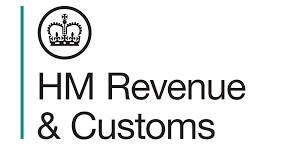HMRC SDLT: Overpayment Relief Exclusion: No Claims After HMRC Court Action Initiated
SDLTM54160 – Overpayment Relief: Exclusions: Case F HMRC Proceedings
A person cannot claim overpayment relief if HMRC has initiated court action to recover due amounts. This aligns with restrictions on income tax overpayment relief. The Exchequer Secretary explained during the 2009 Finance Bill discussions that HMRC must have an assessment to enforce a tax debt. Taxpayers can claim relief before judgment or settlement, provided conditions are met, including a four-year time limit.
- HMRC court action prevents overpayment relief claims.
- Similar restriction applies to income tax overpayment relief.
- Taxpayers have opportunities to self-assess or appeal before proceedings.
- Claims can be made before judgment or settlement if conditions are met.
- Four-year time limit applies for making claims.
“`

Read the original guidance here:
HMRC SDLT: Overpayment Relief Exclusion: No Claims After HMRC Court Action Initiated
SDLTM54160 – Overpayment Relief: Exclusions: Case F HMRC Proceedings
Understanding Overpayment Relief
Overpayment relief allows taxpayers to claim back money if they have mistakenly paid too much tax. However, there are certain situations where you cannot make such a claim. One of these situations occurs when Her Majesty’s Revenue and Customs (HMRC) has started legal action to recover a tax debt.
When Can’t You Claim?
You cannot claim overpayment relief if:
– HMRC has already launched court proceedings to recover the amount you owe.
– This rule exists to keep the process fair and straightforward for both HMRC and the taxpayer.
Key Points from HMRC’s Policy
The Exchequer Secretary to the Treasury provided guidance on this subject during discussions about income tax overpayment relief. The main points can be summarised as follows:
– Demand for Payment: Before taking legal steps, HMRC will usually try to contact the taxpayer to resolve any outstanding debts. This gives you a chance to pay what you owe before any enforcement actions begin.
– Legal Assessment: HMRC needs to issue an assessment or a determination to establish the amount of tax owed. You will have the opportunity to either self-assess or appeal this assessment.
– Time to Claim: If you are in the midst of legal proceedings, you can still make a claim for overpayment relief. However, this must be done before a final judgment is reached in court or you agree on a settlement with HMRC.
– Four-Year Time Limit: To make a claim for overpayment relief, you should remember the four-year time limit. This means you can only claim relief for amounts you paid in error within the last four years.
– Finality of Court Decisions: After the court has made a determination, or after an agreement has been reached between you and HMRC, that decision will be final and cannot be contested.
Examples for Clarity
Let’s consider some examples to illustrate these points:
– Example 1: Suppose you overpaid your Stamp Duty Land Tax (SDLT) and wish to claim a refund. However, if you receive a letter from HMRC indicating that they have started legal proceedings to recover the outstanding tax debt, you will not be able to claim this overpayment relief. The court action takes priority.
– Example 2: Imagine you received an assessment from HMRC that states you owe £5,000 in tax. You may dispute this assessment and choose to appeal. During the appeal process, if HMRC does not pursue legal action, you can claim overpayment relief if you later find out that you overpaid. But once HMRC initiates court proceedings, your ability to claim the relief is blocked.
What Happens During Court Proceedings?
When HMRC issues a court claim to recover tax, it typically means that previous attempts to collect the debt were unsuccessful. Here’s what generally happens:
– Initial Contact: HMRC usually contacts the taxpayer first. They may send letters or make phone calls to remind you of the outstanding tax liability.
– Assessment Issued: HMRC has to send an official assessment or determination showing what you owe. This serves as a formal notice of the tax debt.
– Opportunity to Rectify: If you believe the amount is incorrect, you must act quickly. You can appeal against the assessment, which gives you a chance to present your case.
– Court Action: If the issue remains unresolved, HMRC may file a claim in court to recover the debt. At this point, any claims for overpayment relief are halted.
Legislative Background
The guidance on overpayment relief and its exclusions, such as the rule that prevents claims during active court proceedings, is rooted in legislation formulated to ensure proper tax administration. This avoids creating two conflicting processes—one for claiming relief and another for debt recovery.
During proceedings, it is important to understand your rights and obligations. The legislation aims to keep the tax system manageable and compliant for all parties involved.
Practical Steps for Taxpayers
If you believe you have overpaid tax but are facing legal proceedings from HMRC, here are some steps you can take:
1. Review Your Assessments: Check any communications from HMRC. Make sure the assessments you received are accurate.
2. Engage with HMRC: If you’re unsure or believe there has been an error, contact HMRC to discuss your situation. There may still be options available to settle the matter without further legal action.
3. Seek Professional Advice: If you are confused about the process or how to proceed, consider talking to a tax professional. They can provide guidance based on your specific circumstances.
4. Prepare for Appeal: If you wish to contest an assessment, gather your documentation and prepare your appeal. Ensure that you do this before any legal action is initiated.
5. Document Everything: Keep track of all your communications regarding your tax affairs, especially if you anticipate potential disputes with HMRC.
Important Considerations
When dealing with tax matters, keep the following considerations in mind:
– Act Quickly: The tax system has tight time frames and deadlines. The sooner you address potential disputes, the better your chances of a favourable outcome.
– Understand Your Rights: Familiarise yourself with your rights as a taxpayer, especially concerning overpayment relief and HMRC’s powers to collect tax.
– Be Transparent: When communicating with HMRC, provide complete and accurate information. Transparency can help avoid complications.
– Follow Up: Always keep records of your submissions, including appeals and any correspondence with HMRC. It’s essential for maintaining a clear trail of your requests.
By understanding these principles and following practical steps, you can navigate matters of overpayment relief and the complexities of tax assessments and appeals more effectively.







